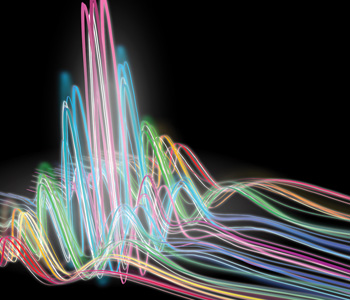Feature
Sources and Science of Attosecond Light
Existing techniques and cutting-edge light sources are opening up the attosecond realm—and illuminating the world of electron motion.
 Artistic representation of a coherent (laser-like) X-ray pulse. [Tenio Popmintchev, JILA, University of Colorado at Boulder]
Artistic representation of a coherent (laser-like) X-ray pulse. [Tenio Popmintchev, JILA, University of Colorado at Boulder]
An attosecond (from the Danish word for “eighteen”) marks an interval of 10–18 seconds. The timescale between 1 and 1,000 attoseconds (10–18 to 10–15 seconds), seemingly inconceivable on the level of ordinary experience, is highly significant in molecular physics and chemistry, because this is the timescale on which electrons move.
…Log in or become a member to view the full text of this article.
This article may be available for purchase via the search at Optica Publishing Group.
Optica Members get the full text of Optics & Photonics News, plus a variety of other member benefits.
